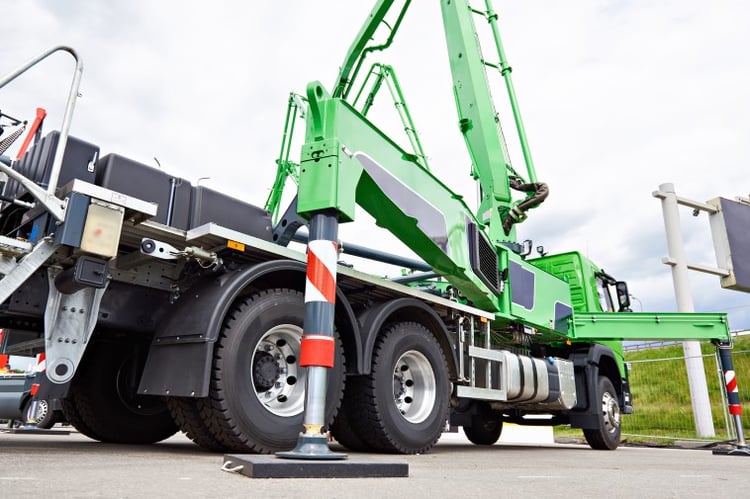
The Board of Equalization (BOE) in California recently increased the excise tax rate for diesel fuel from $0.16 to $0.36 per gallon, effective November 1, 2017. Rates are normally updated annually, and it’s important for commercial fleets and businesses that use off road equipment to stay on top of any changes. While the increase in excise taxes was nothing new, a BOE decision around the same time to revise its regulation concerning the “nontaxable uses of diesel fuel” was noteworthy. The enacted revision has the potential to make filing and recouping fuel tax refunds far simpler for companies with off road equipment.
Separating on and off road diesel
Before you can file for diesel tax refunds, you need to determine how much of your fuel was used off road. In some cases, the process is relatively easy. Some vehicles are equipped with secondary tanks that are distinct from the primary fuel tank to power auxiliary equipment, not the vehicle itself. With an effective fuel card reporting solution in place, transactions can be separated to easily identify gallons that qualify for a refund. Or you can make use of an alternative to refund filing by purchasing off road diesel.
But what happens when auxiliary equipment runs off the same tank as the vehicle? Many companies use vehicles with power take-off (PTO) units mounted onto the transmission that divert power to equipment. With a PTO, there is no separate fuel transaction since all fuel is held within a single tank, and because of that, the refund process has been far more difficult.
PTO testing: A painstaking process
Historically, companies have had to submit a “fuel consumption test” to the BOE to explain the percentage of fuel claimed for off road use when a vehicle and PTO shared the same fuel tank. The process was painstaking as companies were required to submit a detailed proposal describing the test, including:
(a) description of the nontaxable use or activity to be tested; (b) test methodology; (c) list of vehicles to be tested and explanation as to why the selected vehicles are representative of the company's fleet; (d) test duration; (e) seasonal fluctuations that may affect the test periods, if applicable; (f) list of routes to be tested and description of route density variations, if applicable; (g) fueling method and list of locations where vehicles will be fueled; (h) explanation as to why the proposed tests are representative of the company's business operations; (i) sample of daily test log that will be used to record test data; and (j) description of how the test results will be applied in the calculation of nontaxable percentages.
Test proposals would then be approved or revised by the BOE. Companies would then conduct the test and submit all pertinent information to the BOE for final review. Only then could companies claim a percentage of their fuel as off road and eligible for excise tax refunds.
Safe-harbor percentages simplify refund filing
In June of this year, the process for filing off-road diesel tax refunds was helped considerably when a revision to Regulation 1432 was passed. The revision adds safe-harbor percentages for fuel purchases made after April 1, 2016 if you are claiming a portion of the fuel was used to operate equipment. This makes the refund process far simpler for companies. Instead of the arduous test process that was previously required, you can now claim a percentage of your fuel as off road based on the equipment type and BOE guidelines.
| Refund Percentages | |
| Equipment Type | Safe-Harbor Percentage |
| Boom truck/block boom | 15% |
| Bulk feed truck | 15% |
| Car carrier with hydraulic winch | 10% |
| Carpet cleaning van | 10% |
| Cement mixer | 25% |
| Cement pumper | 40% |
| Distribution truck (hot asphalt) | 15% |
| Dump trailer | 15% |
| Dump truck | 15% |
| Fire truck | 25% |
| Garbage truck | 35% |
| Leaf truck | 15% |
| Lime spreader | 15% |
| Line truck with digger, derrick or aerial lift | 20% |
| Log truck with self-loader | 20% |
| Mobile crane | 25% |
| Pneumatic tank truck | 15% |
| Refrigeration truck | 20% |
| Salt spreader (dump with spreader) | 15% |
| Seeder truck | 15% |
| Semi-wrecker | 15% |
| Service truck with jack hammer/drill | 15% |
| Sewer cleaning truck/jet/vactor | 25% |
| Snow plow | 15% |
| Spray truck | 15% |
| Super sucker (port-o-let trucks) | 25% |
| Sweeper truck | 20% |
| Tank transport | 15% |
| Tank truck | 15% |
| Truck with hydraulic winch | 15% |
| Transfer trailer | 20% |
| Wrecker | 15% |
| Other auxiliary equipment | 10% |
If you decide that the BOE guidelines are not representative of your equipment’s usage, you can still apply for off-road diesel tax refunds through the existing process of proposing and conducting a fuel consumption test.
How to file for off road diesel tax refund
Once you decide which method to use, you can get started on the actual refund filing. First, you’ll need to register with the BOE and complete form BOE-32 which asks about your business and equipment. Then you’ll need to submit form BOE-770-DU on an annual basis to claim a refund. Even if you decide to use the percentages suggested by the BOE, you’ll need to know how many gallons were purchased during the claim period and which vehicles and equipment were fueled. Ideally, your fuel card company offers free fuel reports that detail fueling activity so that the refund process is as easy as possible to complete.




